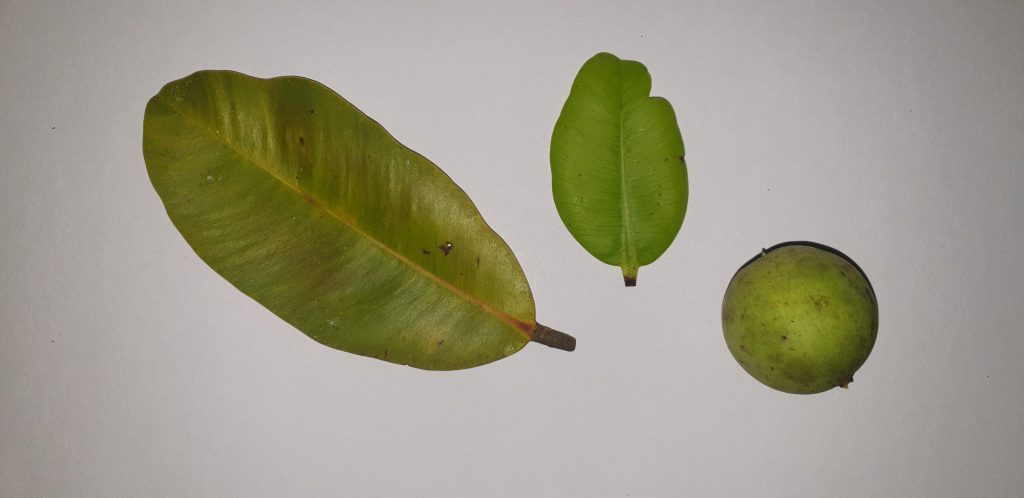
Systematic Classification:
Division : Angiospermeae
Class : Dicotyledonae
Order : Malpighiales
Family : Calophyllaceae
Genus : Calohyllum
Species : ionophyllumCommon Name:
Alexandrian laurel, Balltree, Beach touriga, Red poon.
General Information:
Calophylluminophyllum is a large evergreen plant, commonly called tamanu, mastwood, beach calophyllum, beautyleaf or Sinhala.It is native to tropical Asia and Wallacea. Due to its importance as a source of timber for the traditional shipbuilding of large outrigger ships, it has been spread in prehistoric times by the migrations of the Austronesian peoples to the islands of Oceania and Madagascar, along with other members of the genus Calophyllum. It has since been naturalized in regions in the East African coast. It is also a source of the culturally important tamanu oil. Calophylluminophyllum is a low-branching and slow-growing tree with a broad and irregular crown. It usually reaches 8 to 20 m (26 to 66 ft) in height. The flower is 25 mm (0.98 in) wide and occurs in racemose or paniculate inflorescences consisting of four to 15 flowers. Flowering can occur perennially, but usually two distinct flowering periods are observed, in late spring and in late autumn. The fruit (the ballnut) is a round, green drupe measuring 2 to 4 cm (0.79 to 1.57 in) in diameter and having a single large seed. When ripe, the fruit is wrinkled and its color varies from yellow to brownish-red.
Economic Importance:
- Leaves and flowers, are also commonly used for traditional medicine.
- The leaves contain compounds that are poisonous to fish and can be used as fish poison. The sap of the tree is poisonous and is used to make poison arrows in Samoa. The mature fruit is poisonous enough to use as rat bait.
- The seeds yield a thick, dark green tamanu oil for medicinal use or hair grease.
